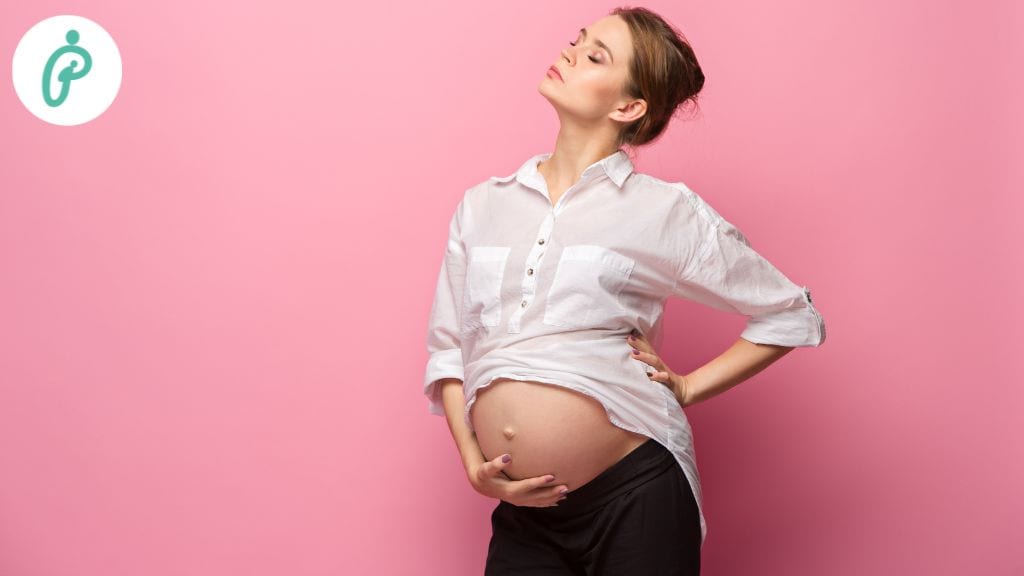
Table of Contents
Child bearing hips is a term that people aren’t very used to. Everyone is aware that women have a natural structure for childbearing, but a specific childbearing hip concept can confuse them a lot. A lot of queries arise seeking answers to the most famous question ‘Does a childbearing hip make any difference while giving birth?’ also ‘do they ease childbirth?’
Well, to know the answers, keep reading!
What are ‘Childbearing Hips’?
The pelvis shape is structured in a manner to accommodate the baby during the entire duration of pregnancy. The bony structure of the pelvis starts shifting and making way for the baby to come out as the day of delivery approaches. Every woman has a different pelvis shape, some have a wide pelvis or hips while others might have a narrow one.
And one such shape of the pelvis is known as the child bearing hips. These are not superpowers that some women possess, but yes they may have ease giving birth to a child. A child bearing hip has a wider or larger hip structure.
Child bearing hips are easier for birthing processes, as the pelvic structure is wide. Now, to know more about these childbearing hips, one must have more insights into the different pelvis shapes.
How Different Types of Pelvic Shapes Influence Childbirth

As per the research in the 1930s, it was stated that women’s pelvises can be classified into four categories, however, that is not the case now. Researchers find it difficult to stick to this limited categorization. So, to understand if birthing hips or childbearing hips make any difference during labor, one must first understand the different pelvic structures.
1. The Gynecoid Pelvis Shape
One of the most common shapes found in women is the gynaecoid pelvis shape. Structured shallow and wide, these types of pelvis help in assisting the baby through the birthing canal. It can be rightly said that the gynecoid shape helps in easy vaginal birth. It is one of the most favorable shapes when it comes to giving birth as it provides more room for the baby.
Usually, curvy women with fat near their thighs rather than the midriff have gynecoid pelvis. So, if your doctor tells you that you have childbearing hips, then it means you have wider or shallow-shaped hips.
2. The Anthropoid Pelvis Shape
The gynaecoid pelvis was wider from side to side whereas the shape of the anthropoid pelvis is wider from front to back, which gives less room for the baby, making the labor not so easy. This shape inhibits the complete opening of the pelvis during a baby’s birth, this can make the labor comparatively longer too.
Usually, these women weigh their abdomen and buttocks. These women are suggested to be active members during childbirth and are advised to involve in activities like squatting or walking to ease the process.
3. The Android Pelvis Shape
Women with smaller buttocks, and narrow pubic arches, and the ones that are usually taller possess this kind of pelvis shape. The pelvis has a heart-shaped brim and is narrow in the front. Thus a triangular shape is created at the inlet with a narrowed-down sub-pubic arch. Cesarean deliveries are advised for android pelvis-shaped women as there is less space for the baby to pass through the birth canal.
But there are also cases when a vaginal birth is taken into consideration and in such a case, the doctor asks the mother to push harder. The possibility of a normal delivery cannot be ruled out in this type of pelvis structure but the only issue is that the labor will also take a longer time.
But there are also cases when a vaginal birth is taken into consideration and in such a case, the doctor asks the mother to push harder. The possibility of a normal delivery cannot be ruled out in this type of pelvis structure but the only issue is that the labor will also take a longer time.
4. The Platypelloid Pelvis Shape
With ischial spines being prominent and the subpubic arch being wide, the platypelloid pelvis forms a flat shape at the inlet with a hugely visible sacrum. The major issue with this kind of pelvis is that the baby will take longer to enter the pelvis area, but once it enters then the labor will become easier.
Usually, it is considered a long labor process. The major difference between the android pelvis and the platypelloid pelvis is that the latter has a narrow subpubic arch while the former has a wider one.
How Child Bearing Hips Work The Birthing Process?

Various factors must be taken into consideration before taking women into labor. The position of the baby, the size of the baby’s head, and the health of the mother are the various aspects to look for. Now whether a woman will have a vaginal delivery or will require a c-section is not dependent on the pelvic shape.
The closer you move towards childbirth, your body starts preparing itself to deliver the baby. Bones from the pelvic region will start separating, and the pelvis will start stretching and will make way for your baby to make healthy movements. It starts getting wider. But keep in mind that, while all these changes happen, the one thing that stays constant is the shape of the bone structure.
So the news is that it will be easier for a woman with childbearing hips to give birth. Your midwife or your doctor will tell you that your labor will be easier than the others. Even while you push your child out naturally, it won’t take long hours as there is more room for the baby to move. These changing ligaments will provide you with great support. However, hip size cannot be the sole determining factor when looking for an easier childbirth. Other factors matter too.
1. Baby’s size
The size of your baby matters a lot and it plays a major role in childbirth. Even women with wider hips will face difficulty in pushing a larger baby out.
In this case, the baby might be larger than the pelvic region, and hence slowing down the delivery process. The exact same happens with women with a narrow pelvis. Usually, it takes longer for pregnant women to push the baby out, but if they are delivering a smaller baby, then the process speeds up.
2. Baby’s position
It takes weeks for your baby to be in the exact right position for birth. People do wait for this to happen. The position also decides the gravity of how hard or easy childbirth will be.
Babies in the head-down position are easy to deliver whereas the breech position which is also known as the bottom-down position makes it complicated. This is when various techniques are used to rotate the body of the baby and get the head below.
However, a C-section is recommended if these techniques don’t work. There is also a piece of good news, during majority time, the baby moves into this position in the final weeks of pregnancy.
3. Your Health
A healthy mother gives birth to a healthy child. Yes! A mother’s health influences the means by which a child is born. A woman’s support is needed when delivering through the vagina. She needs physical strength to push the baby out. This won’t happen if she is weak. Hence a certain measure should be taken to stay healthy.
4. Contraction strength
Some women have weak uterine contractions. The tightening and relaxing of the muscles in the uterus actually help you push the baby. But if they aren’t strong, then it will prolong the process.
Remember that though there are different factors taken into consideration for naturally giving birth, it is also a fact that a woman’s body is made to give birth to babies of all sizes and shapes and they have the ability for the same.
Takeaway
There is no need to worry about whether or not your muscles will contract naturally, will the size affect you, will the bones not give way to your child, or even the question of how could other women do these with ease. Understand the fact that childbirth is a different experience for different people.
For some, it might depend on the weight of the baby and it could be the size, until you are in active labor, you won’t know how it will progress. Hence the pelvis shape matter can be ignored, till your doctor raises an issue. So wider hips or not, giving birth doesn’t completely depend on that.
Pregnancy is a period to enjoy, do that while it lasts.






